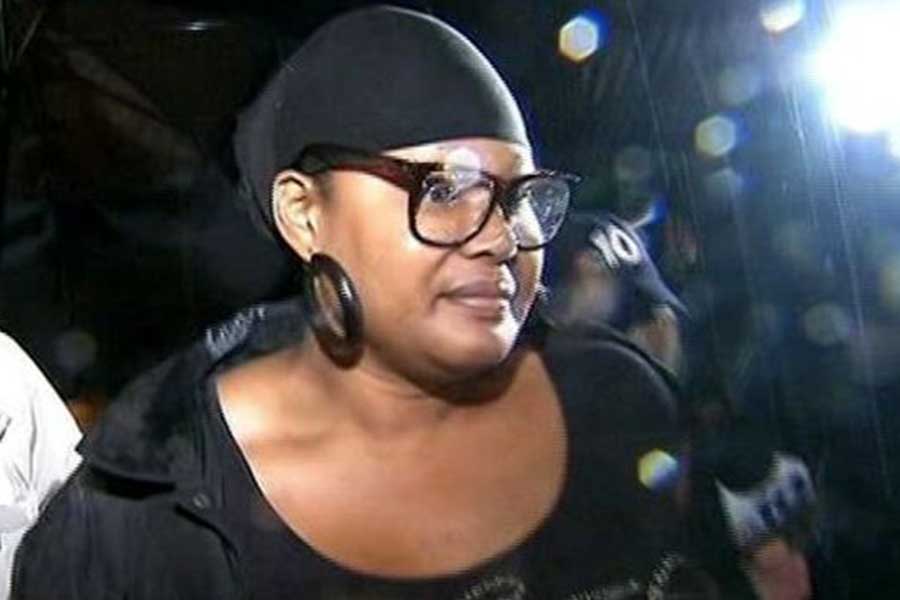It was Sean Reid’s first juror experience. And it was quite an experience.
Reid, 38, was an alternate juror for the recent murder trial of Padge Victoria Windslowe, a transgender hip-hop artist who calls herself the Black Madam. As an alternate, Reid was present for all of the trial proceedings but did not deliberate with the jury. On March 9, the jury ultimately found Windslowe guilty of third-degree murder, aggravated assault and two counts of possession of an instrument of crime.
Windslowe was accused in the 2011 death of British tourist Claudia Aderotimi, who came to the United States to receive a silicone injection in her buttocks from Windslowe and died shortly after. Windslowe, who had no formal medical training, was also charged in another injection that landed a woman in the hospital.
Reid, a Mount Airy resident who works in software development, said he was vaguely familiar with the case, but not enough to cloud his judgment, when he was called to report for jury duty Feb. 17.
“It was a lot of waiting,” he recalled. “The first day I showed up I was selected for an initial pool of about 100 people, and we were mostly just waiting all day.”
About 20 from that pool were brought back the next day for questioning by the judge and attorneys before the final 12 jurors — six men and six women — and four alternates, one of whom was later recused, were chosen. The alternates would be asked to step in should one of the jurors not be able to continue.
The trial opened Feb. 19, with the prosecution team presenting its case first. Prosecutors presented a slew of witnesses, including medical professionals and former clients of Windslowe.
Reid said among the most impactful was a woman nicknamed Backshot.
“She was a former client and had evidently gone to her for injections. But she was hospitalized, with shortness of breath, a few days later and still uses an oxygen tank to this day,” Reid said. “She talked about the struggles of her daily life because of it and how her work as a dancer has been compromised. They had some really strong witnesses but I think she was probably the strongest.”
As witnesses, both professionals and former clients, testified to the dangerous nature of Windslowe’s practices, Reid noted that the defendant’s facial expressions were evident to the jury.
“She acted shocked. If any expression came across her face during it, it was a look of shock or disbelief. If someone was saying something bad about her, it was like she couldn’t believe these people thought she would ever hurt anyone,” he said.
The defense team presented just a few witnesses before Windslowe took the stand.
“It was a show,” Reid said.
Windslowe testified for about two-and-a-half days; in the middle, she began complaining of chest pains and was hospitalized. The jurors, Reid said, weren’t told the reason the trial was pre-empted, a delay that was further elongated by snow.
Reid said Windslowe’s testimony hindered, rather than helped, her defense.
“I think it was a horrible move,” he said, about putting the defendant on the stand. “To me, I just didn’t think she was believable. Her story was different every time she told it. When the prosecutors were asking questions, it was never a direct answer; she took the long way around and then at times it just seemed evident she was lying.”
In Windslowe’s sent to clients, she would address the injections in terms of “CCs” but halfway through her testimony began referring to the silicone measurement in cups.
“The prosecutor was putting her in a corner, pointedly asking her about CCs and she just switched to talking about cups and the rest of the time referred to the measurements as cups,” Reid said. “To me, that pointed to how talented of a liar she was.”
Reid believes the defense did do a credible job of demonstrating that Windslowe, who said she was doing silicon injections since the mid-1990s, may not have been educated on the potential effects of the procedure.
“I don’t think she was out to hurt people. I think she was ignorant and really didn’t know,” he said. “I don’t know how true it is but the defense’s strongest point was that what we know about this procedure now we may not have known back then. There was a level of ignorance on [Windslowe’s] part, so what do you do with someone like that?”
If he had had been part of the deliberations, Reid said, he would have argued against the murder conviction.
“I think it was more involuntary manslaughter. I don’t think she was injecting to kill. I don’t think she had that much disregard for life.”
Reid said that, despite the colorful elements of the trial, the jury took its responsibility seriously.
“It was strange. Oftentimes, the whole courtroom would even laugh at something the defense attorney would say. There were definitely things about the case that were ludicrous. But, then you think about what actually happened, you have to take it seriously. It’s crazy to think someone was out there doing this and someone else died because of it.”
Windslowe will be sentenced in June.
